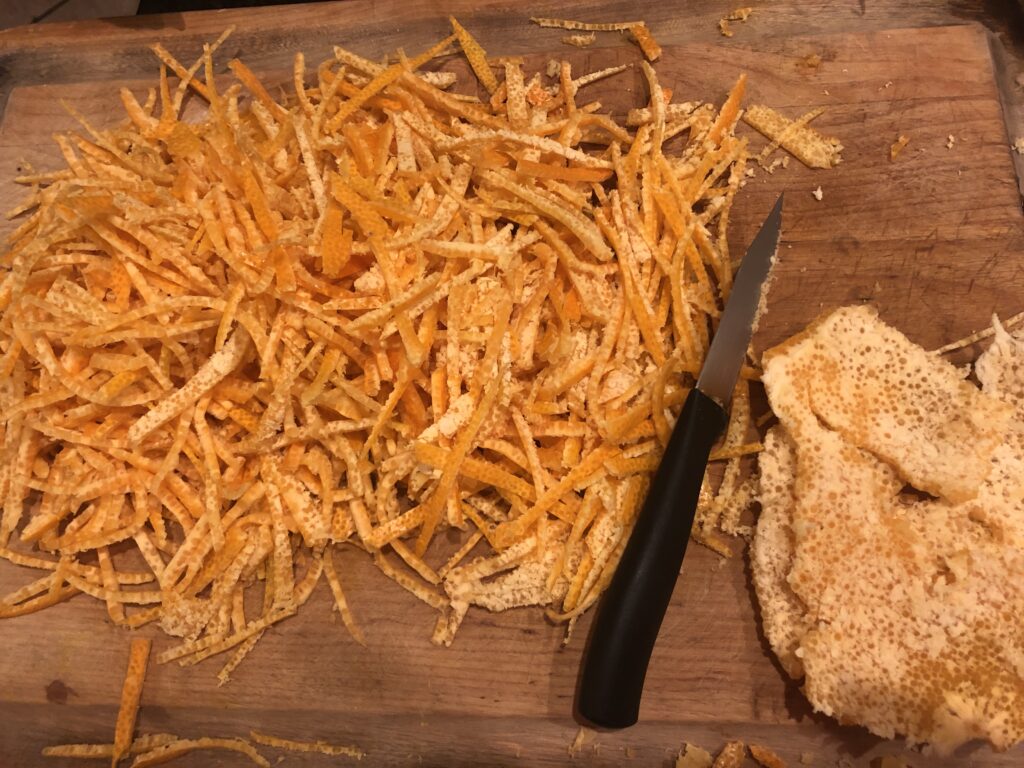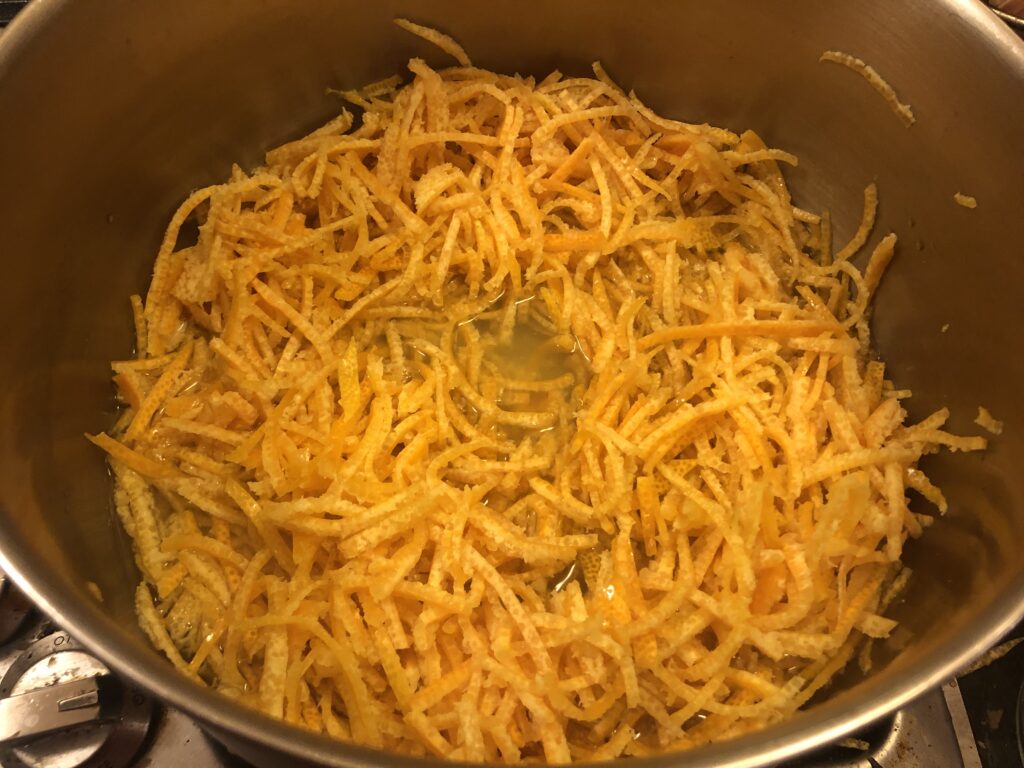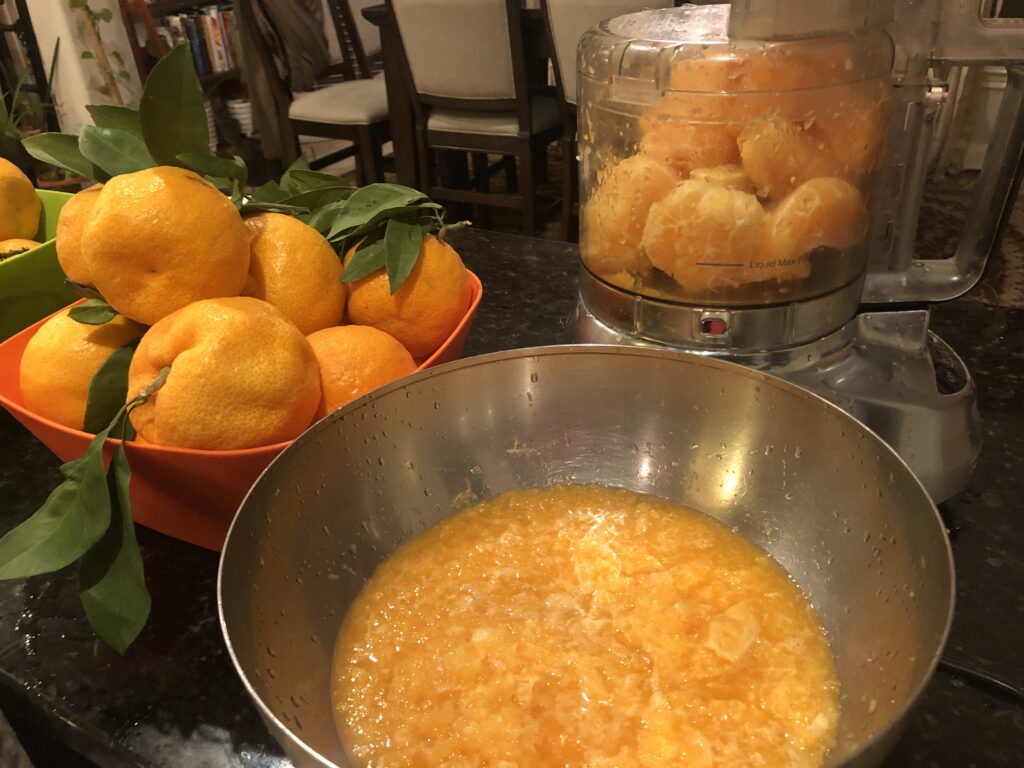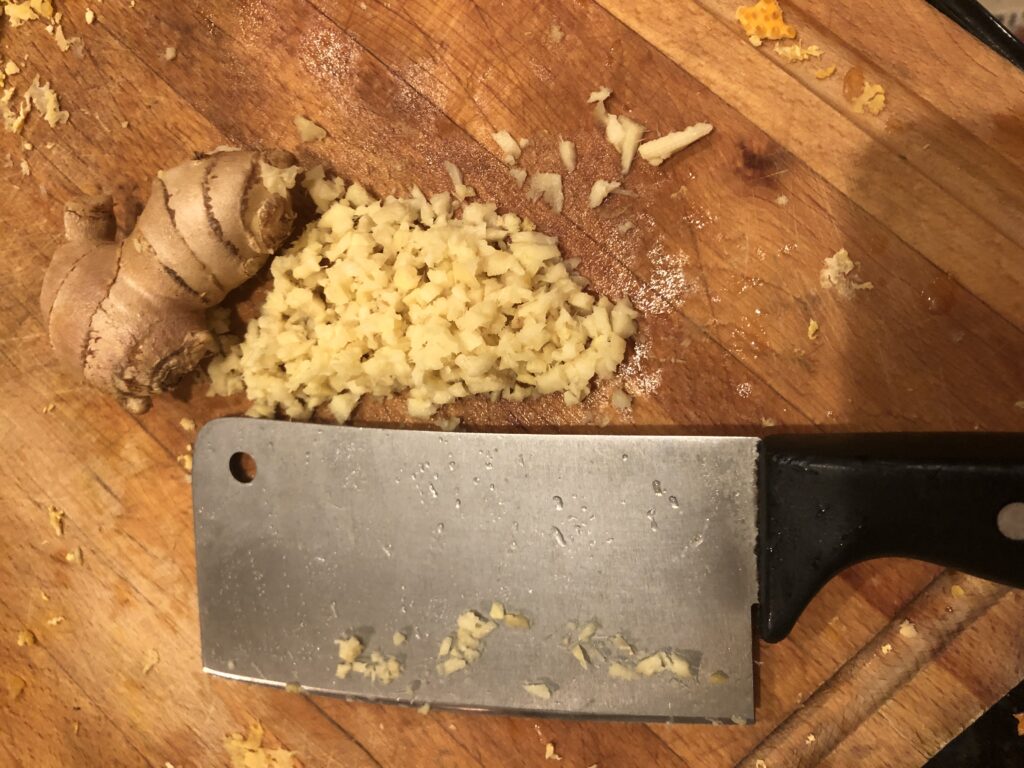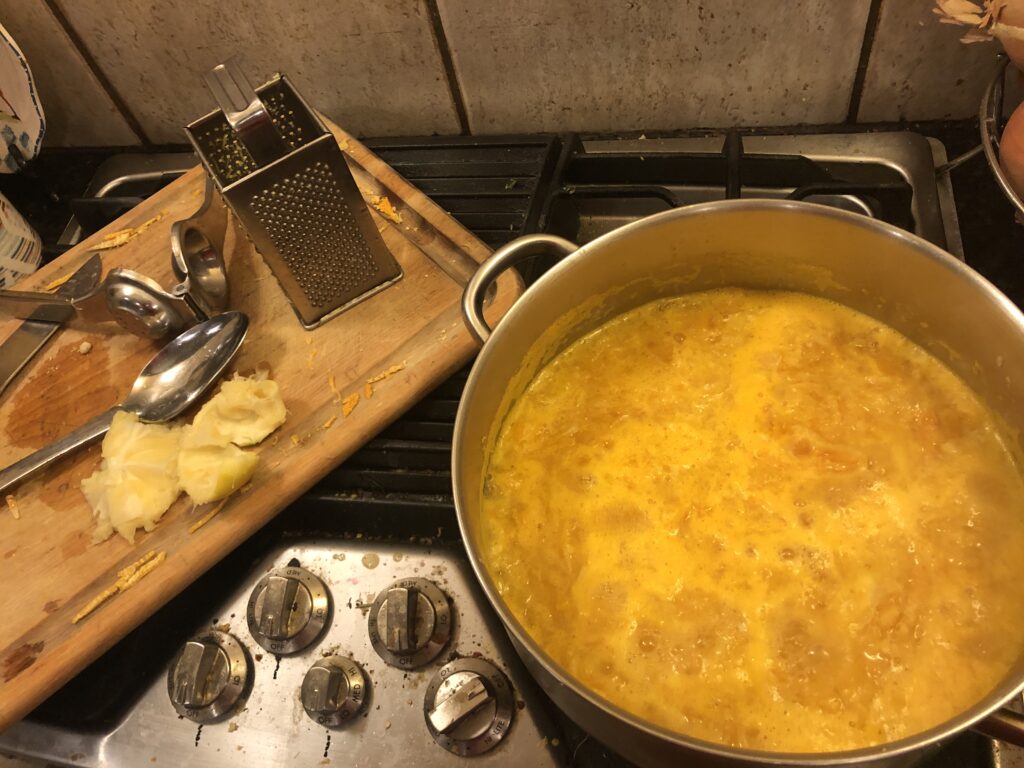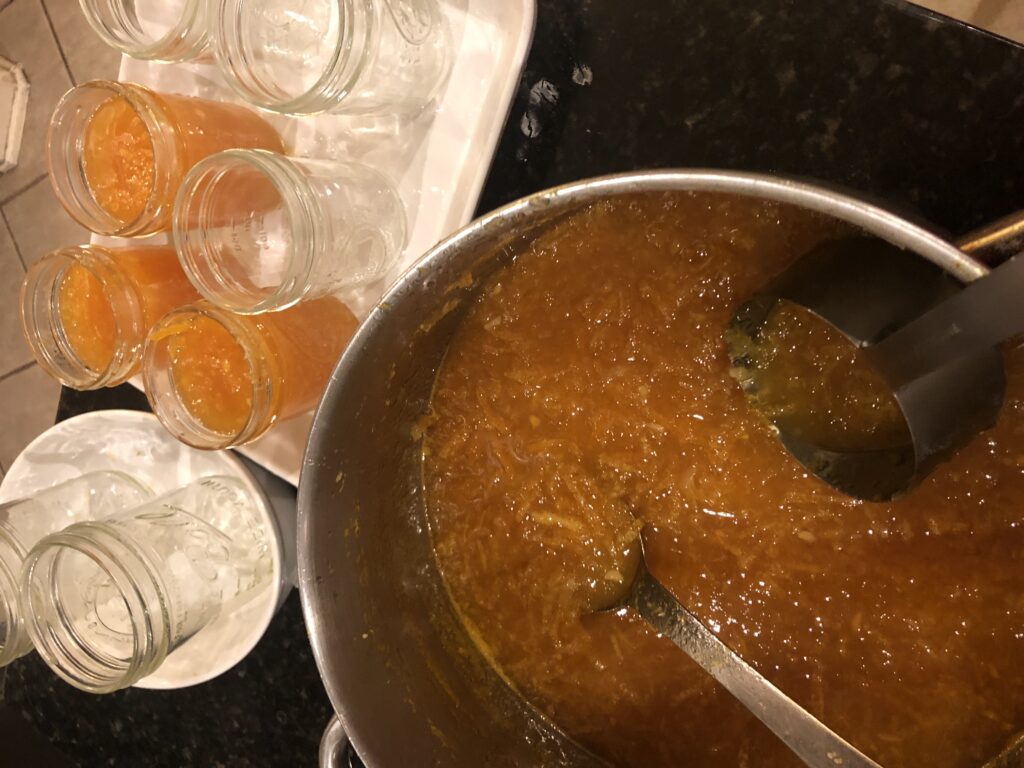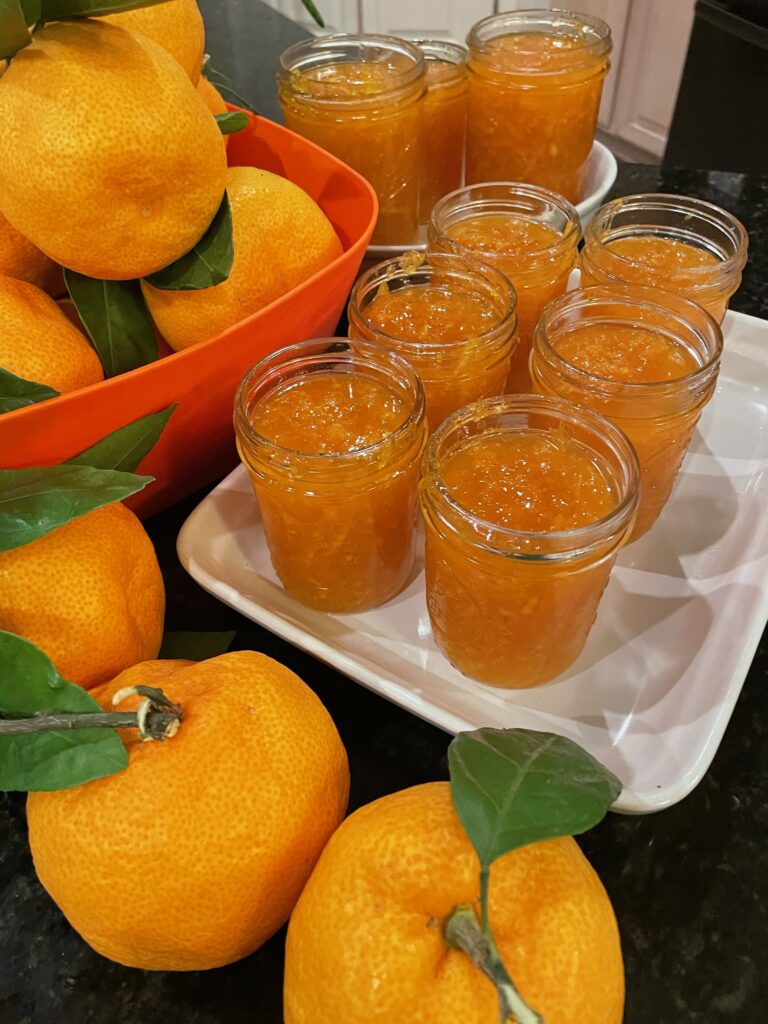
What is Marmalade and how is it different from Jams or Jellies? It’s a fruit preserve similar to jam or jelly, but typically includes fruit peel besides the fruit. The most popular marmalades are made from citrus fruits like oranges, kumquat and grapefruit. The orange marmalade with fruit and peel is a delicious and aromatic combination of sweet and bitter.
Fruit Jelly is made from strained juices of fruit with no pieces of fruit. Jams are thicker than jelly and made with fruit pulp and can contain edible seeds like in figs jams. Preserves are thicker than jam and contain fruit pulp, edible seeds and some chunks of fruit.
Marmalades are best made from Seville oranges they say, but if you have an orange tree growing in your backyard, it doesn’t matter what breed it is, you can still make marmalade with it 😉 I have a Satsuma Mandarin orange tree with a loose peel orange. It may not be the best orange for marmalade, but these are my homegrown, organic oranges, which I just harvested before the freezing cold temperatures and these have been getting made into marmalades at my home over the years.
Ingredients:
- Satsuma Mandarin oranges-5lbs or 10 large – Including peel and fruit
- Water-2 cups
- Sugar- 6 cups or 2.8 – 3 lbs
- Ginger- finely chopped, 2-3 tablespoons
- Lemon Juice from 1 large or 2 medium lemons
- Lemon Zest-1 lemon
- Fruit Pectin- (Sure Jell brand)- 1 box (1.75 oz)
Method:
Wash all the oranges soaked in water since you will be using the oranges with the peel. Peel the oranges and set the fruit and peel aside separately. On a cutting board set the peel flat and with a knife, gently scrape and remove the white pith off the skin. It’s optional to retain the pith since it acts as pectin. Now take about 80 percent the skins and slice the peels into fine julienne strips. The julienne strips should be about 2 cups or more.
Take a large pot and warm two cups of water, add the julienned orange peel strips to it and let it boil for 5 to 10 minutes. This soften the peel before adding to the fruit pulp. To reduce the bitterness you can drain out the water from the peels and swap with same amount of fresh water. I prefer to continue with the same water since the balance of sweet and bitter is delicious in marmalade.
While the peels are boiling set a large pot of water to boil and sterilize the mason jars. Let them simmer in the boiling water and keep ready to pour marmalade in the jars.
Next take each orange and scape and peel out the white pith off the fruit. I find the white membranes messy hence prefer it out. Set the clean fruits in a food processor and pulse the fruit of the oranges, or take a hand blender and make a puree of the oranges in a bowl, whichever is easier for you.
Zest the lemon and add the zest to the orange pulp. I used my home grown lemon but it’s a good idea to use organic lemons to zest. Also add the juice of this lemon to this pulp and juice mixture. Now add the fruit pulp to the pot of softened peels. To this add the finely chopped ginger too. I love how it adds zing to the marmalade and how the subtle flavors of ginger enhances the deliciousness of orange marmalade.
When this whole peel and pulp mix is at a vigorous boil, add the sugar and cook, stirring occasionally until the marmalade has thickened slightly. (You can use a candy thermometer, if you have, and take it to 220 degrees).
At this point I added the Fruit Pectin to thicken the Marmalade. Over the years I have added or skipped the pectin in marmalade according to the achieved consistency. When the marmalade is ready and a good consistency is achieved, transfer it to the sterilized clean and dry mason jars.
The mason jars can be put back in a water bath to vacuum seal the lids. The marmalade can stay in sealed jars in the pantry, but I personally prefer to keep in refrigerator to more enjoy my labor of love and oranges.
I love to eat my Marmalade with fresh croissants, toast of French bread, as a dressing on olive oil cake or in my Marmalde and Almond cake.




